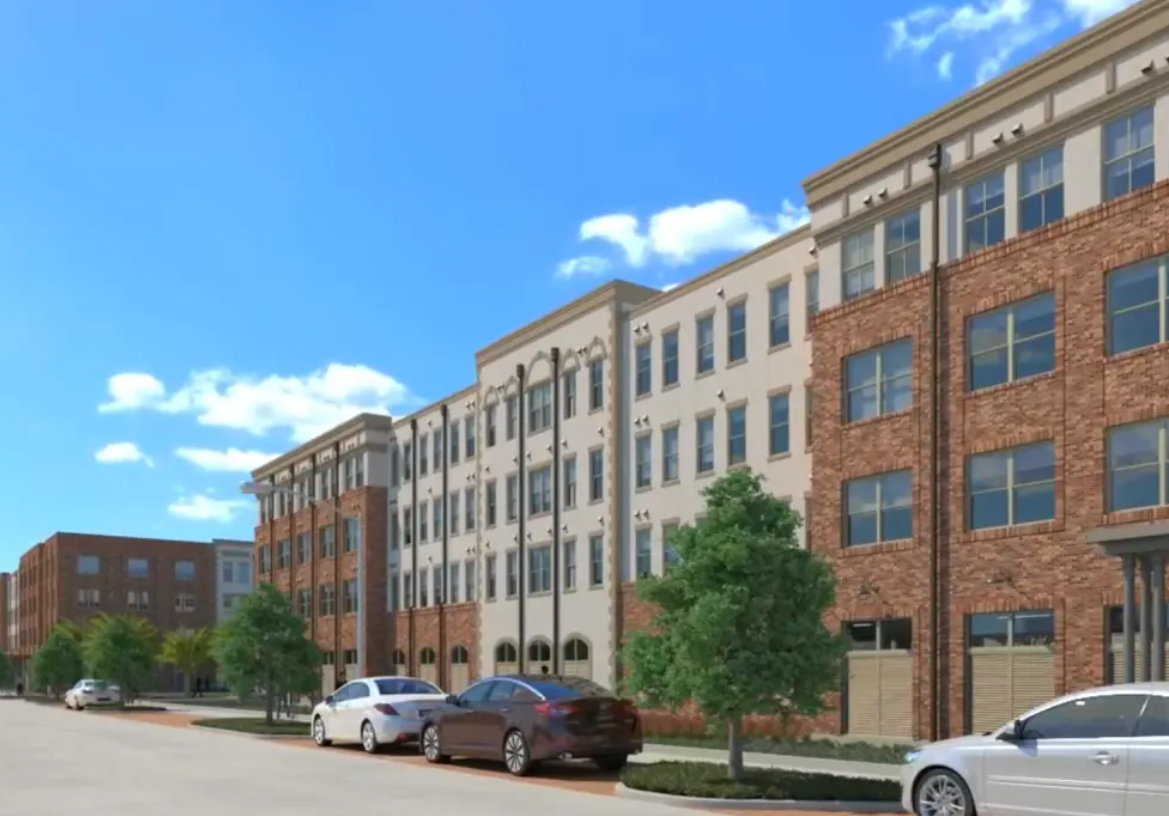Despite an estimated shortage of 7.3 million rental homes affordable and available to extremely low-income families, public housing authorities (PHAs) nationwide have not received congressional funding to build new deeply affordable housing in their communities in decades. PHAs’ hands became even more tied after Congress passed the Faircloth Amendment, which capped PHA public housing stock at the number of public housing units they operated as of October 1, 1999 (known as their ‘Faircloth Authority’). This created a de facto ban on building new public housing.
The U.S. Department of Housing and Urban Development (HUD) recently rolled out Faircloth-to-RAD, a new program that could allow up to 1,101 PHAs to build up to 235,730 new deeply affordable housing units to replace public housing that was demolished or disposed of after 1999.
Read on to learn more about:
- Why developing deeply affordable housing has been difficult
- How Faircloth-to-RAD is structured
- How to determine if your organization is eligible
- Strategies for success
 The Galveston (Texas) Housing Authority utilized Faircloth-to-RAD to rebuild hurricane-damaged deeply affordable housing units. The Oleanders at Broadway is a 348 mixed-unit development and is scheduled for completion in August 2023. (RPGA Design Group, Inc. rendering)
The Galveston (Texas) Housing Authority utilized Faircloth-to-RAD to rebuild hurricane-damaged deeply affordable housing units. The Oleanders at Broadway is a 348 mixed-unit development and is scheduled for completion in August 2023. (RPGA Design Group, Inc. rendering)
The challenge
Chronic disinvestment from Congress has also made it difficult for PHAs to maintain their current public housing stock. PHAs currently face $70 million dollars in backlogged capital needs to address deferred maintenance at their public housing properties. As a result of long-term disinvestment from Congress, approximately 10,000 public housing units are lost each year due to demolition or disposition. While PHAs that have lost public housing since 1999 have dipped below their Faircloth Authority and can legally build new public housing, capital fund deficits have prevented these agencies from acquiring funding to build and replace public housing that was lost.
Faircloth-to-RAD: A new tool to build deeply affordable homes
In 2021, HUD launched the Faircloth-to-RAD (Rental Assistance Demonstration) program to help PHAs with Faircloth Authority build new deeply affordable housing in their community. Faircloth-to-RAD allows PHAs to build public housing through HUD’s public housing mixed-finance program on a temporary basis.
Through the program, HUD grants PHAs pre-approval to convert the property to a Section 8 funding stream once construction is complete. While Faircloth-to-RAD doesn’t provide funding to help PHAs build new affordable housing directly, it provides long-term operating subsidies that can be used to secure private capital to catalyze construction efforts. Lenders and investors are more familiar with the structure and revenue certainty Section 8 contracts provide, which enables them to underwrite the construction of these properties more confidently. PHAs can fund the initial construction of these properties leveraging a combination of programs, such as Low-Income Housing Tax Credits (LIHTC), housing bonds, national Housing Trust Fund, Project Based Vouchers (PBVs), state and local subsidies, or other organization funds.

The map displayed shows the number of Faircloth units available by state. This visualizes the number of units that could be built, using Faircloth-to-RAD conversions.
Can your organization leverage Faircloth-to-RAD?
As of 2021, up to 235,000 new deeply affordable homes could be built by PHAs through Faircloth-to-RAD. Of the 1,101 PHAs that have lost housing since 1999, more than 500 across 49 states have 20 or more units available to be built through their Faircloth Authority. Review RAD Resources to see if your organization has units available to develop using Faircloth-to-RAD.
Tips for success
Since the launch of the program one year ago, 21 PHAs have added nearly 1,850 new deeply affordable homes to the construction pipeline using Faircloth-to-RAD. While the number of PHAs leveraging the program during the first year was limited due to uncertainty and challenges in acquiring financing, industry stakeholders believe its use will expand after developers, PHAs, and HUD identify a template for success. The biggest challenge hampering development efforts using Faircloth-to-RAD is the low rents (and thus operating subsidies) these new units receive through HUD’s funding formula.
Early adopters of Faircloth-to-RAD suggested the following strategies to leverage the program, as summarized by the Terner Center for Housing Innovation at UC Berkley:
- Combining Faircloth-to-RAD with Project-Based Vouchers (PBVs) allows PHAs to cross-subsidize their Faircloth-to-RAD units to make development and operation costs pencil out. While residents living in homes assisted by both PBVs and Faircloth-to-RAD only pay 30% of their income towards rent, PBVs generally have higher-contract rents. This means that the government pays the property owner a larger subsidy to operate the PBV units, increasing income for the property. These higher rents can offset the lower rents required in units funded through Faircloth-to-RAD. This strategy is only available to PHAs with Housing Choice Vouchers (HCVs) available to project base. Generally, PHAs can project base up to 20% of their HCVs. PHAs can project base an additional 10% of their vouchers if they are used in a low-poverty neighborhood, target veterans or homeless populations, or provide supportive services to residents. Combining Faircloth-to-RAD with PBVs is particularly effective among PHAs in high-cost markets with low voucher utilization rates.

This rendering by RPGA Design Group, Inc. shows recreational and parking features at The Oleanders at Broadway on Galveston Island in Texas, scheduled for completion this summer.
-
Supplementing Faircloth-to-RAD rents using Moving to Work (MTW) authority is another way PHAs can meet the operating costs of these properties. More than 100 housing agencies participate in the MTW demonstration program, which grants them funding and regulatory flexibility to increase cost-effectiveness, promote workforce engagement, and increase housing choice. PHAs with MTW authority have the ability to reallocate their funds to supplement Faircloth-to-RAD rents as long as they continue to serve at least the same number of families and don’t exceed RAD rent caps. Cambridge Housing Authority was able to justify using its MTW funding flexibility to supplement Faircloth-to-RAD rents by demonstrating that it would be a third of the cost of administering a voucher.
-
Partnering with developers interested in building affordable housing targeted to extremely low-income or very low-income households is another opportunity. This can be especially appealing in states with set-asides or incentives for assisting extremely low-income families when allocating LIHTCs. While many PHAs have shifted their operating models to leverage tax credits to build and preserve affordable housing for their residents, partnering with developers can be an effective strategy for PHAs looking to leverage Faircloth-to-RAD if they have less experience financing properties with LIHTC.
Interested in learning more?
We can help. HAI Group Online Training offers a comprehensive curriculum and certifications in key programs, including the RAD PBV program, standard PBV program, tenant-based HCV program, LIHTC, MTW, and more.
This article is for general information only. HAI Group® makes no representation or warranty about the accuracy or applicability of this information for any particular use or circumstance. Your use of this information is at your own discretion and risk. HAI Group® and any author or contributor identified herein assume no responsibility for your use of this information. You should consult with your attorney or subject matter advisor before adopting any risk management strategy or policy.
HAI Group® is a marketing name used to refer to insurers, a producer, and related service providers affiliated through a common mission, management, and governance. Property-casualty insurance and related services are written or provided by Housing Authority Property Insurance, A Mutual Company; Housing Enterprise Insurance Company, Inc.; Housing Specialty Insurance Company, Inc.; Housing Investment Group, Inc.; and Housing Insurance Services (DBA Housing Insurance Agency Services in NY and MI).





